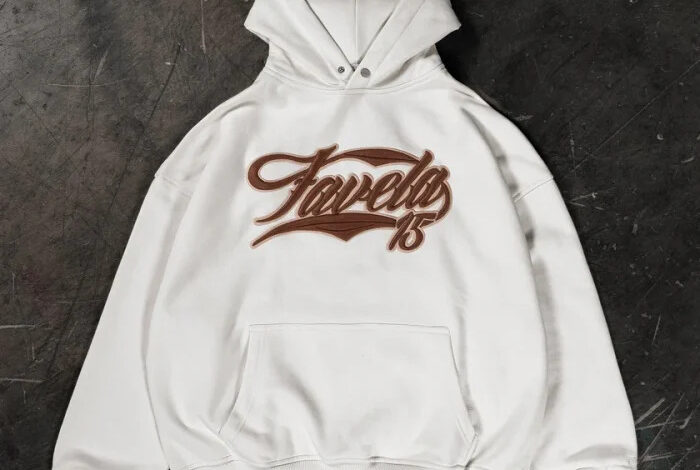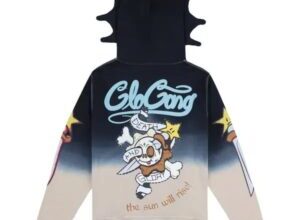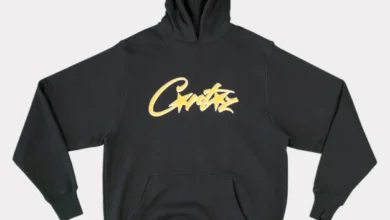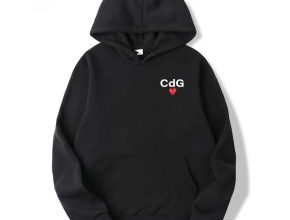The Favela Hoodie: A Cultural Statement Wrapped in Urban Luxury

A Hoodie Beyond Fashion: Understanding the Roots of Favela Culture
When most people hear the word “Favela,” their minds instantly drift toward the vibrant yet complicated neighborhoods in Brazil—places known for their unfiltered energy, raw creativity, and deep social history. But in the realm of contemporary streetwear, Favela is not just a location—it’s a declaration, a movement, and a voice for communities that have long thrived in the shadows of global fashion capitals. The Favela Hoodie draws from this rich tapestry of culture, resilience, and artistic rebellion, transforming a basic garment into something deeply symbolic and culturally significant.
The essence of the Favela Hoodie lies in its unapologetic authenticity. It doesn’t aim to conform to the clean lines and sterile minimalism seen in high fashion. Instead, it celebrates grit, soul, and survival. This hoodie isn’t just stitched with fabric—it’s sewn with the spirit of samba, the courage of street kids, and the rhythm of community resistance. Wearing it is not just a style choice; it’s a nod to the roots of struggle, pride, and identity.
Design That Speaks: Raw Aesthetic Meets Urban Innovation
Unlike mass-produced hoodies that often feel soulless and disconnected, the Favela Hoodie tells a story with every detail. Its design reflects a deliberate marriage of chaos and control. Raw hems, bold prints, distressed fabric, graffiti-inspired typography, and earthy or washed-out tones create a narrative of urban survival. Each hoodie often appears as though it has lived a thousand lives—weathered, but unbroken.
Some versions feature patchwork designs using multiple fabrics—repurposed denim, faded cotton, or torn mesh—giving off a DIY aesthetic that mirrors the improvised architectural style of the favelas themselves. Hoodies may also incorporate functional details like hidden pockets or oversized hoods that offer a utilitarian edge, drawing parallels with how residents in favelas repurpose and innovate with limited resources.
This isn’t just a hoodie you wear for warmth. It’s one that embodies protection, defiance, and a rebellious sense of pride. The imperfections in its design are intentional—they mirror the beauty found in resilience.
Wearing Identity: A Statement Against Conformity
What makes the Favela Hoodie stand out in today’s saturated fashion world is its ability to act as a symbol of identity. It resonates with youth from underrepresented backgrounds who use clothing as a form of protest, pride, and self-definition. In a time where fast fashion often exploits cultural imagery without understanding its roots, the Favela Hoodie is a reclaiming of narrative.
For many wearers, it represents the power of transformation—turning overlooked culture into celebrated fashion. It breaks the elitism in streetwear by reminding everyone that real style doesn’t always come from glossy magazines or high-end boutiques. Sometimes, it comes from the narrow alleyways of overlooked neighborhoods, where culture is born out of necessity and style is forged in survival.
The Favela Hoodie isn’t for those looking to blend in—it’s for those ready to speak up without saying a word. It’s worn by people who aren’t afraid to be seen, who understand that their roots are not something to hide but something to proudly showcase.
Favela Hoodie in Pop Culture and Streetwear Movements
The impact of the Favela Hoodie is not limited to underground scenes or niche fashion communities. Over the last few years, it has steadily infiltrated pop culture and global streetwear movements. Influencers, musicians, and activists have all been spotted rocking this bold statement piece—not just for its aesthetic appeal, but for the message it sends.
Hip-hop artists, in particular, have gravitated toward the Favela Hoodie because of its raw symbolism. Just like hip-hop originated in marginalized communities as a voice of resistance, the hoodie acts as wearable protest—a reminder that real culture cannot be commodified or diluted.
International brands have even begun collaborating with Brazilian street artists and community designers to produce limited-edition hoodies inspired by the favelas. While this raises some concerns about cultural appropriation, it also opens up opportunities for authentic creators to gain recognition and platforms they were previously denied.
Fabric with a Soul: Sustainable and Ethical Undertones
One of the most admirable aspects of many Favela Hoodie labels is their commitment to sustainability and ethical production. These garments are often handmade or produced in small batches by local artisans and community-run workshops. This not only ensures high-quality craftsmanship but also supports circular economies and helps break the cycle of poverty in these areas.
Rather than relying on environmentally harmful fast fashion factories, many brands rooted in favela culture take pride in slow fashion. They repurpose vintage fabrics, utilize natural dyes, and offer customization that gives each hoodie a unique identity. In essence, no two Favela Hoodies are ever the same—just like the neighborhoods that inspire them.
Supporting these brands goes beyond fashion—it becomes an act of social justice, environmental stewardship, and cultural preservation. In a world full of mass-produced sameness, the Favela Hoodie stands out as something deeply personal, deeply human.
The Symbolism of the Hoodie: More Than Fabric and Thread
Historically, the hoodie has been both vilified and celebrated. It has been associated with rebellion, anonymity, activism, and youth subcultures. The Favela Hoodie amplifies all those associations but grounds them in specific cultural relevance. It doesn’t merely borrow the aesthetic of streetwear—it embodies the essence of street life.
The hood itself represents more than protection from the elements. It symbolizes defense against prejudice, invisibility from societal judgment, and sometimes even a metaphorical shelter from systemic inequality. The Favela Hoodie wraps the wearer in a cocoon of defiance and pride, allowing them to carry their story on their sleeve—literally.
For youth in the favelas, the hoodie might be their armor against stereotypes. For fashion lovers in major cities, it’s a tribute to urban artistry. And for everyone in between, it is a way to participate in a larger conversation about class, culture, and the ever-evolving world of fashion as a social mirror.
From Local to Global: The Rising Influence of Favela Fashion
In recent years, the global fashion scene has started to pay attention to marginalized voices and community-driven design. As streetwear continues to dominate the mainstream, the Favela Hoodie has found a place on international runways, social media feeds, and boutique shelves across continents. But with that growth comes responsibility.
It’s important to recognize that the heart of the Favela Hoodie isn’t in glossy marketing or influencer partnerships—it’s in the lived experiences of the people who inspired it. As the hoodie becomes more popular globally, maintaining authenticity and channeling resources back into the communities of origin becomes paramount.
Some forward-thinking brands have started partnering directly with favela-based creators, offering profit-sharing models, co-design opportunities, and cultural exchange platforms. This ensures that the hoodie doesn’t just look good—it does good.
Conclusion: More Than a Hoodie—It’s a Movement
In a world where fashion often feels shallow or performative, the Favela Hoodie stands as a powerful counter-narrative. It is more than fabric—it is fire. A wearable manifesto for change, creativity, and community pride. It speaks to anyone who has ever felt overlooked or underestimated, transforming a piece of streetwear into a badge of honor.
With every stitch, print, and patch, the Favela Hoodie challenges us to look deeper—not just at our clothing, but at the culture and stories woven into them. It urges us to redefine luxury, not by price tag but by purpose. And perhaps most importantly, it reminds us that beauty often grows in the places we least expect—from the hills of Rio to the streets of any city where fashion meets rebellion.
So the next time you pull on a hoodie, ask yourself: Is it just a hoodie, or is it a Favela Hoodie? Because one simply covers you. The other empowers you.




